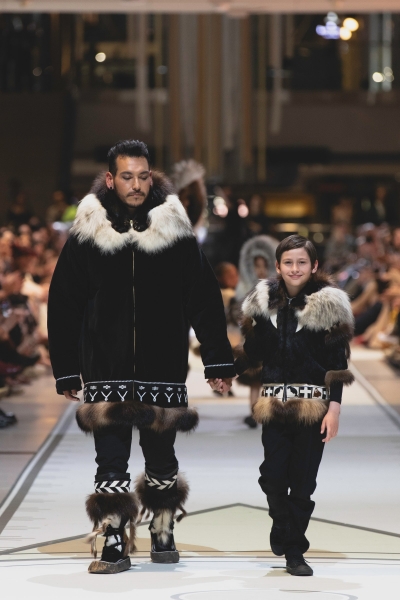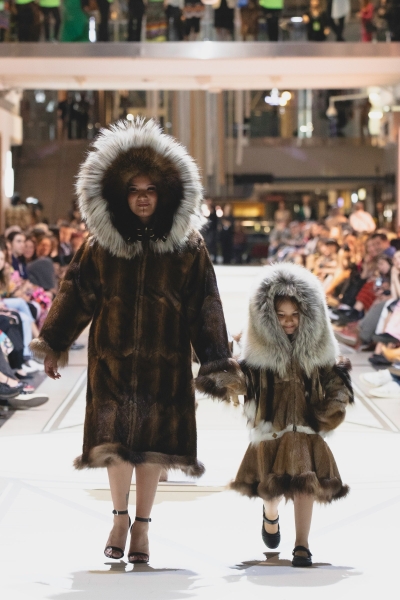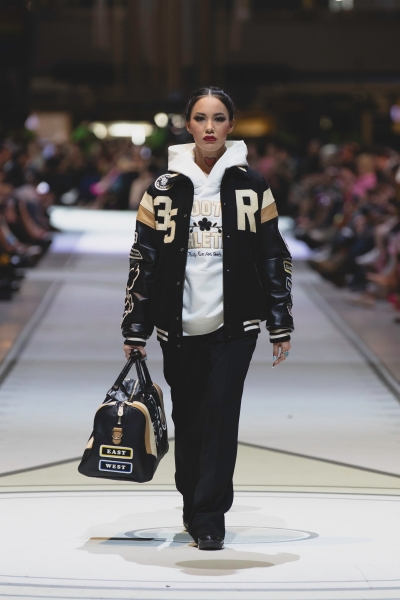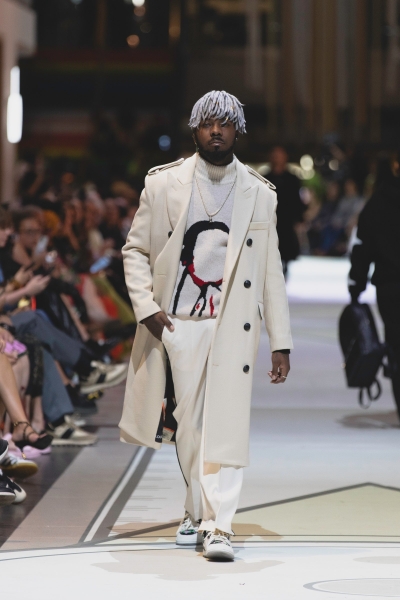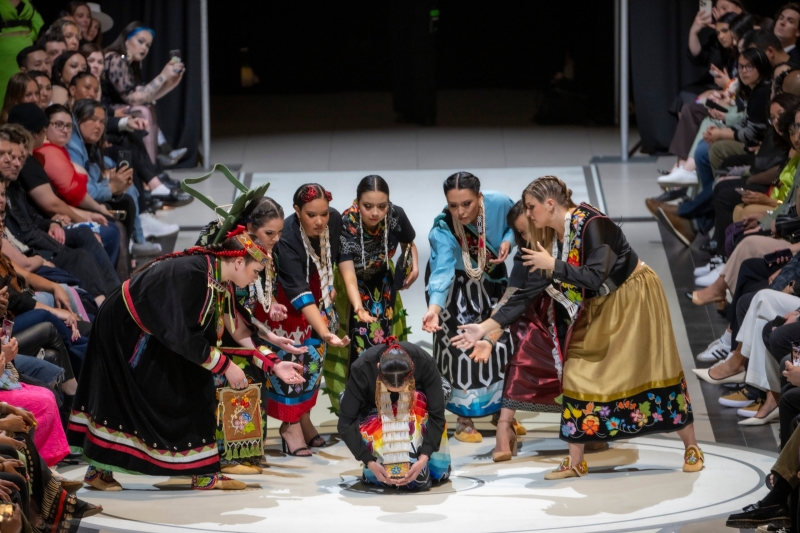This weekend the biennial Indigenous Fashion Arts (IFA) festival kicked off in Toronto. First launched in 2016, the one-of-a-kind event included four days of fashion shows putting a spotlight on contemporary Indigenous fashion designers. For the first time ever, the festival took place inside the city’s Eaton Centre mall, drastically increasing the size of the presentations—and the guest list. “Our move to a bigger venue with larger audiences allowed me to see how Indigenous fashion is poised to be a global leader in the industry,” says Sage Paul, the executive and artistic director of Indigenous Fashion Arts. “Our fashion—Indigenous fashion—will always be in demand, and we have reclaimed it.”
This year the IFA festival featured an exciting array of designers curated by Paul, Wanda Nanibush, and Melanie Egan. “Each show was a powerful fashion narrative that showcases the brilliance, beauty, craftsmanship, and range of Indigenous fashion,” says Paul. The mix ranged from designers who specialize in traditional regalia (including labels such as ReeCreeations, which has made special ribbon skirts for Secretary of the Interior Deb Haaland), to contemporary innovators in the streetwear space (such as Mobilize, which makes use of upcycled fabrics). “From customary to contemporary, the mix of designers was reflective of the broad cultural and individual expression coming from the Native fashion world,” says Paul.
The variety of runway shows showcased the diversity of today’s growing Indigenous fashion space, proving that Native design doesn’t have to look one certain way. Uniting the designers, however, was a sustainable approach to design and a focus on traditional craftwork. Highlights included the Inupiaq offering from Arctic Luxe’s Bobby Brower, who showed fur-trimmed parkas; Dene Couture designer Tishna Marlowe, who debuted an elegant offering of buckskin dresses embroidered with florals; and Rebecca Baker-Grenier, who created copper corset tops paired with full tulle skirts.
Streetwear and menswear also shined throughout the eventful week. Mobilize, for one, showed upcycled hoodies, tulle skirts, platform moccasins, and hoodies that read “Cuzzins”—an ode to cousins, which many Indigenous folks call each other. Designer Justin Jacob Louis also debuted a special collaboration with Roots for him and her, including his stamp on the Canadian brand’s signature letterman jackets and leather duffel bags.
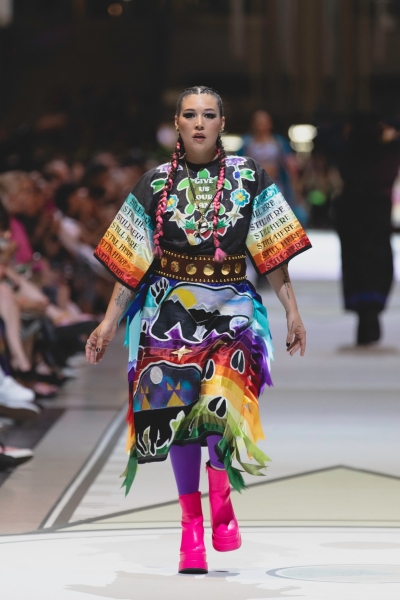
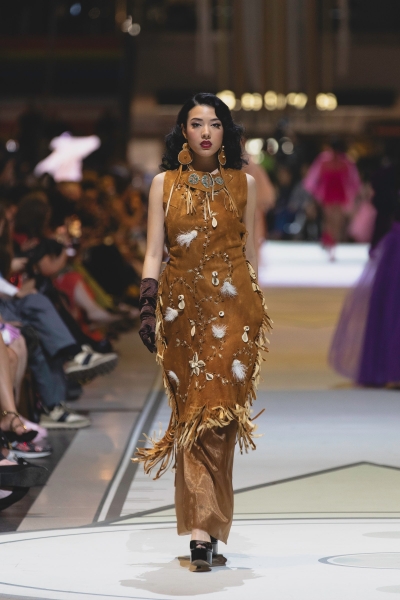
But the IFA festival wasn’t just about what debuted on the splashy catwalks: The event also maintained its focus on fostering community and supporting the next crop of Indigenous talent. To do so, workshops were held each day where artists could perfect traditional techniques such as quillwork, metalwork, and root dyeing. Daily panels also explored topics such as the intersection of Indigenous design and artificial intelligence, as well as how Indigenous artists can engage in mindful merchandising in a consumer-driven world.
On Saturday and Sunday, meanwhile, IFA also hosted a shoppable marketplace inside the Eaton Centre mall, where patrons could shop a variety of authentic, Indigenous-made goods (including from the designers who showed on the runway). “Audiences and buyers travel great distances to visit our marketplace,” says Paul. “The marketplace offers them the opportunity to buy and wear Indigenous fashion authentically and respectfully. Our marketplace is Indigenous led, sustaining a deep understanding that upholds Indigenous representation, sovereignty, and freedom of expression. That is vital for longevity and innovation in Indigenous fashion.”
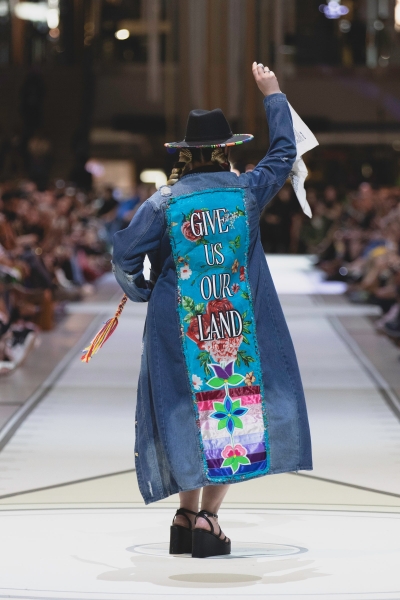
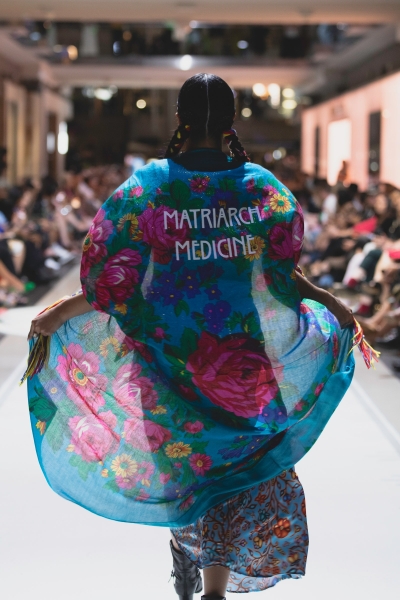
As the eventful weekend wrapped on Sunday evening, it was clear that the IFA festival will continue to grow year after year. Paul hopes that the event will always go back to its original intent, which is to provide education and storytelling around Indigenous culture—and to showcase the beauty that lies within it. “This year’s festival transformed how we see fashion on the stage, the value of Indigenous-made fashion, and the strength of our communities,” says Paul. “There is an appetite to learn, engage, and see Indigenous fashion at center stage. I hope people learned that Indigenous fashion is a powerful medium with distinct universality.”
Below, more of the best looks from the 2024 Indigenous Fashion Arts.
